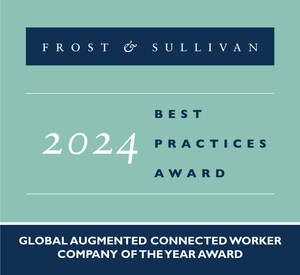Advanced Recycling Technologies and Collaborative Solutions to Lead the Transition to Circular Economy in Plastics
Frost & Sullivan shares themes and strategies for lucrative growth prospects presented by circular economy goals
SANTA CLARA, Calif., April 6, 2021 /PRNewswire/ -- Frost & Sullivan's recent analysis, Convergence and Collaboration to Usher Circular Economy in the Plastics and Composites Industry, finds that leading brand owners and original equipment manufacturers in the industry are adopting strategies to integrate sustainability and circularity into their business activities following mounting pressure from consumers and government bodies. While nearly 370 million tonnes of plastics were consumed in 2019, overall plastics waste collection volumes were estimated to be around 45% to 50% of the total consumption. Additionally, only under a third of the plastic waste collected was recycled whereas two-thirds of the volume was either sent towards landfilling or incineration/energy recovery, resulting in a significant proportion of plastics remaining in the environment. Furthermore, overall plastic consumption is expected to expand at a compound annual growth rate of 3% to 4% over the next five years. The concept of a circular economy is, thus, gaining momentum globally.
In this study, Frost & Sullivan has identified eight individual themes—reuse, mechanical recycling, purification and depolymerization, feedstock recycling, upcycling, alternative feedstock, enabling technologies, and collaboration—used to categorize different strategies companies are implementing to create a more circular economy for plastics.
For further information on this analysis, please visit: http://frost.ly/5jf
"There is an urgent need for concerted efforts from stakeholders across the value chain to ensure collaborative development of the circular flow of materials (loops) across end industries," said Gautam Rashingkar, Chemicals, Materials and Nutrition Research Analyst at Frost & Sullivan. "The industry needs both advanced recycling technologies as well as advanced technology-based solutions that improve the sorting, traceability, accountability, and transparency in the flow of materials across the value chain."
Rashingkar added: "A swift transition to a circular economy entails the development of a system composed of a series of interlinked loops, the convergence of technologies, and continuous collaborative engagements that ensure reduction, reuse, regeneration, and recycling of plastics. Additionally, the successful development of a well-integrated circular economy in plastics depends, to a large extent, on the in-tandem functioning of initiatives across each of the themes, thereby generating sustainable economic and environmental value on the one hand and ecological balance by diverting waste away from incineration facilities and landfills on the other."
Circular economy presents lucrative growth prospects. Market participants should consider:
- A collaborative approach toward sustainable product development: Participants must engage in collaborative initiatives focusing on eco-design and scaling and strengthen recycling infrastructure to commercialize advanced recycling technologies.
- Strengthening reverse logistics and recycling infrastructure: Stakeholders across the value chain must invest in collecting, sorting and recycling infrastructure across geographies.
- Integrating mechanical and chemical recycling approaches: Incumbents should consider setting up integrated facilities that help cut down handling and logistics costs and improve the overall recycling rate.
- Design for recyclability and reuse: Stakeholders should ensure circularity by adopting an eco-design approach that focuses on enhancing product durability, reparability and reusability; increasing energy and resource efficiency; and reducing carbon dioxide emissions and plastic waste accumulation.
Convergence and Collaboration to Usher Circular Economy in the Plastics and Composites Industry is the latest addition to Frost & Sullivan's Chemicals, Materials and Nutrition research and analyses available through the Frost & Sullivan Leadership Council, which helps organizations identify a continuous flow of growth opportunities to succeed in an unpredictable future.
About Frost & Sullivan
For six decades, Frost & Sullivan has been world-renowned for its role in helping investors, corporate leaders and governments navigate economic changes and identify disruptive technologies, Mega Trends, new business models, and companies to action, resulting in a continuous flow of growth opportunities to drive future success. Contact us: Start the discussion
Convergence and Collaboration to Usher Circular Economy in the Plastics and Composites Industry
MFC2
Contact:
Jaylon Brinkley
Corporate Communications
T: +1.210.247.2481
E: [email protected]
SOURCE Frost & Sullivan

Related Links
WANT YOUR COMPANY'S NEWS FEATURED ON PRNEWSWIRE.COM?
Newsrooms &
Influencers
Digital Media
Outlets
Journalists
Opted In





Share this article